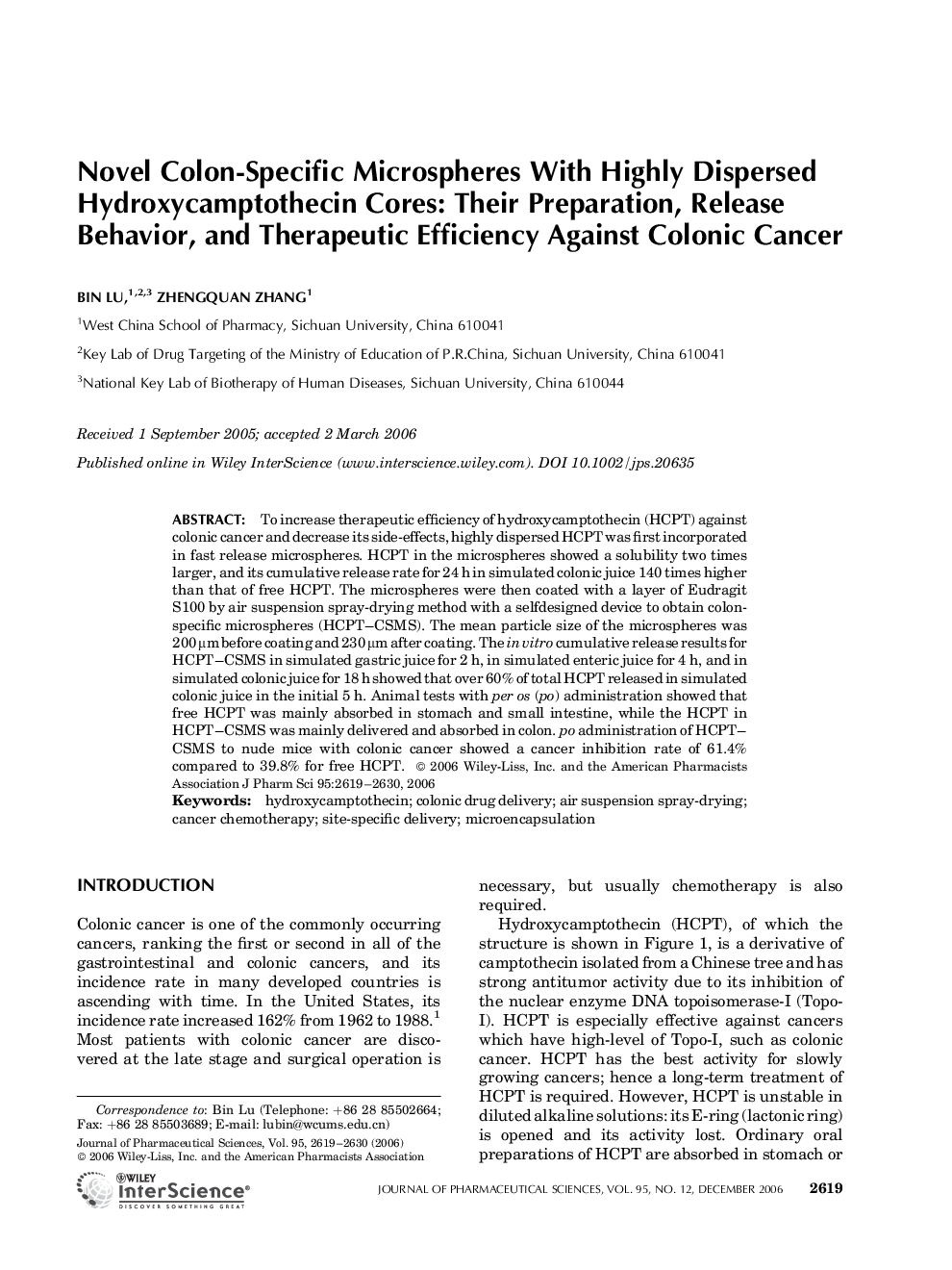| Article ID | Journal | Published Year | Pages | File Type |
|---|---|---|---|---|
| 2487904 | Journal of Pharmaceutical Sciences | 2006 | 12 Pages |
Abstract
To increase therapeutic efficiency of hydroxycamptothecin (HCPT) against colonic cancer and decrease its side-effects, highly dispersed HCPT was first incorporated in fast release microspheres. HCPT in the microspheres showed a solubility two times larger, and its cumulative release rate for 24 h in simulated colonic juice 140 times higher than that of free HCPT. The microspheres were then coated with a layer of Eudragit S100 by air suspension spray-drying method with a selfdesigned device to obtain colon-specific microspheres (HCPT-CSMS). The mean particle size of the microspheres was 200 µm before coating and 230 µm after coating. The in vitro cumulative release results for HCPT-CSMS in simulated gastric juice for 2 h, in simulated enteric juice for 4 h, and in simulated colonic juice for 18 h showed that over 60% of total HCPT released in simulated colonic juice in the initial 5 h. Animal tests with per os (po) administration showed that free HCPT was mainly absorbed in stomach and small intestine, while the HCPT in HCPT-CSMS was mainly delivered and absorbed in colon. po administration of HCPT-CSMS to nude mice with colonic cancer showed a cancer inhibition rate of 61.4% compared to 39.8% for free HCPT.
Keywords
Related Topics
Health Sciences
Pharmacology, Toxicology and Pharmaceutical Science
Drug Discovery
Authors
Bin Lu, Zhengquan Zhang,
